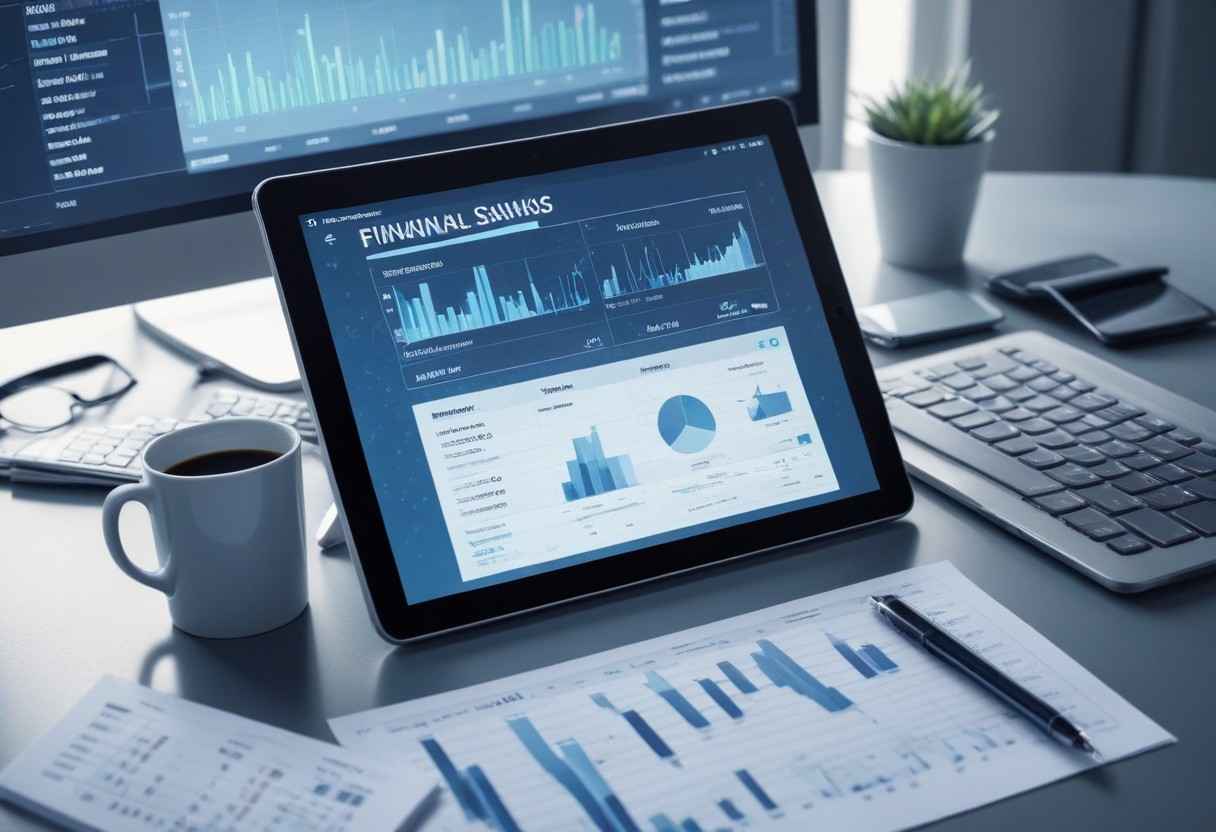As the pace of modern finance accelerates, maximizing returns on savings takes on new urgency. High-yield savings accounts offer an outstanding way to expand wealth while retaining liquidity and security. Rates tower far above traditional accounts, promoting more vigorous growth. This comprehensive guide explores top high-yield accounts, distinguishing features, and optimization tactics.
What Precisely Defines a High-Yield Savings Account?
A high-yield savings account represents a variant paying markedly higher interest than regular savings accounts. Typically issued by online banks and credit unions benefiting from leaner structures than physical institutions, elevated rates catalyze goal achievement through amplified profits.
Advantages of High-Yield Savings Accounts
Skyward Interest: Higher returns constitute the seminal advantage, meaning accumulation accelerates over time.
On-demand Access: Unlike long-term vehicles such as certificates of deposit or bonds, ready liquidity endures without penalties for withdrawals as needs arise.
Rock-solid Security: Insured by the FDIC or NCUA up to $250,000 per individual per issuer, funds rest in safe hands.
No Minimum Floor: Many require no opening balance, widening the pool of eligible savers.
Selecting the Optimum High-Yield Savings Account
Selecting the optimum high-yield savings account necessitates considering several salient factors:
- Interest Accrual: Accounts offering competitive annual percentage yields are highly coveted. Constantly monitor prevailing rates as fluctuations loom.
- Expenses: Excessive expenses, especially monthly maintenance and transactional levies, diminish accumulation and warrant circumvention.
- Access: Effortless access empowers liquidity via mobile and web platforms, transfers, and ATM retrieval.
- Customer Care Quality: Reassurances, particularly when issues emerge. Survey satisfaction ratings and support diversity.
- Supplementary Perks: Reimbursements, fiscal tools, and educational resources enhance value propositions.
Prominent Options Based on Returns, Costs, and Amenities
Ally Bank Online Savings: Impresses with a towering 3.25% APY exempting maintenance fees. Their user-friendly mobile app and round-the-clock assistance ease navigation and growth.
Marcus by Goldman Sachs: Parallels at 3.20% sans charges, streamlining management and backing reputable service. Both exemplify unobtrusive, high-yield vehicles devoid of deception or constraints.
Discover the Benefits of an Online Savings Account
With an impressive annual percentage yield of 3.3% and no monthly fees to contend with, Discover’s high-yield savings account offers savers a competitive return on their money. What’s more, account holders are granted access to a nationwide ATM network, a valuable perk not typically associated with online-only savings vehicles. Discover also provides an intuitively designed online banking platform, streamlining management of one’s savings.
High Returns with American Express
The American Express High Yield Savings Account delivers a solid annual percentage yield of 3% with no recurring monthly charges to customers. While a linked checking account is not an available feature, their straightforward savings option excels at facilitating the growth of deposits over time through a hassle-free structure.
Maximizing Interest with CIT Bank
CIT Bank constructs a unique tiered interest rate structure incentivizing consistency, rewarding depositors who retain balances of $25,000 or make monthly contributions of at least $100 with the highest APY of up to 1%. This account suits disciplined investors aiming to optimize the returns earned on their savings.
To Maximize the Potential of Your High-Yield Savings
Considering the tips below can help optimize the benefits derived from a high-yield savings account.
- Regular Assessments of Changing Rates: Interest paid on these accounts fluctuates frequently, so periodically reviewing and comparing yields ensures securing the best return. Switching providers when a superior APY becomes available may further boost savings.
- Automating Deposits into Savings: Setting up automatic transfers from your checking account automates savings, ensuring steady contributions accelerate growth over time.
- Limiting Withdrawals: While funds remain readily available, regular withdrawals can hinder progress. Use the account mainly for growing deposits rather than as a checking account alternative.
- Leverage Additional Features: Take full advantage of every extra feature provided by your bank, such as financial planning instruments and automated savings programs. These supplementary offerings can provide added usefulness and help you manage your savings more successfully.
- Monitor Account Charges: Even though many high-return savings accounts lack monthly maintenance fees, be conscious of any other possible costs, like excessive transaction charges. Steering clear of unnecessary fees can help you maintain more of your earned returns.
Advanced Strategies for Maximizing Your High-Yield Savings Account
To further enhance the growth of your high-yield savings account, consider employing the following advanced strategies:
1. Diversify Your Savings
While a high-yield savings account is a fantastic tool, diversifying your savings across multiple accounts or financial instruments can spread risk and potentially increase returns. Consider allocating portions of your savings to other high-yield accounts, certificates of deposit (CDs), or money market accounts, depending on your financial goals and risk tolerance.
2. Utilize Tax-Advantaged Accounts
If you’re saving for specific goals like retirement or education, using tax-advantaged accounts such as IRAs or 529 plans can provide additional benefits. Contributions to these accounts might offer tax deductions, and earnings can grow tax-free or tax-deferred, enhancing your overall savings growth.
3. Stay Informed on Financial Trends
Financial markets and interest rates are dynamic. Staying informed about economic trends, Federal Reserve rate changes, and new financial products can help you make timely adjustments to your savings strategy. Subscribing to financial news sources and consulting with a financial advisor can provide valuable insights.
4. Reinvest Your Interest Earnings
Instead of withdrawing the interest earned from your high-yield savings account, reinvest it to compound your returns. Compounding interest can significantly boost your savings over time, as you earn interest on both your principal and the accumulated interest.
5. Take Advantage of Promotions and Bonuses
Banks and credit unions frequently offer promotions and bonuses to attract new customers. These can include cash bonuses for opening a new account or maintaining a certain balance for a specified period. Taking advantage of these offers can provide an immediate boost to your savings.
6. Automate Financial Management
Utilize automation tools to streamline your financial management. Automatic transfers, budgeting apps, and financial tracking tools can help ensure you stay on top of your savings goals and make informed decisions. Automating your savings contributions minimizes the risk of forgetting to deposit funds and ensures consistent growth.
7. Regularly Re-evaluate Your Financial Goals
Your financial goals and circumstances may change over time. Regularly re-evaluate your goals and adjust your savings strategy accordingly. Whether you’re saving for a down payment on a house, planning a vacation, or building an emergency fund, aligning your savings plan with your current objectives ensures you stay on track.
Additional Resources and Tools
Many financial institutions offer a range of tools and resources to help you manage and optimize your savings. These may include:
- Financial Calculators: Tools for calculating future savings growth, comparing interest rates, and planning for major financial goals.
- Educational Materials: Articles, webinars, and tutorials on personal finance topics, including savings strategies and investment options.
- Mobile Banking Apps: Features for tracking account balances, setting up automatic transfers, and monitoring transaction history.
- Customer Support: Access to financial advisors and customer service representatives who can provide personalized advice and assistance.
Savings Accounts
Savings accounts come in various forms, each designed to meet different financial needs and goals. Understanding these options can help you choose the best account to maximize your savings.
1. Traditional Savings Accounts
Traditional savings accounts are the most common type, typically offered by brick-and-mortar banks and credit unions. These accounts provide a safe place to store your money while earning a modest interest rate. They usually come with the following features:
- Low Minimum Balance Requirements: Many traditional savings accounts require a low minimum balance, making them accessible to a wide range of savers.
- Accessibility: Funds can be easily accessed through ATMs, bank branches, and online banking.
- FDIC or NCUA Insurance: Deposits are insured up to $250,000 per depositor, providing security for your money.
2. High-Yield Savings Accounts
High-yield savings accounts offer significantly higher interest rates compared to traditional savings accounts. These are typically provided by online banks and credit unions, which can offer better rates due to lower overhead costs. Key benefits include:
- Higher Interest Rates: These accounts offer competitive annual percentage yields (APYs) that can significantly boost your savings over time.
- Online Access: Most high-yield accounts are managed online, offering convenience and ease of use.
- Low Fees: Many high-yield savings accounts come with minimal or no monthly maintenance fees.
3. Money Market Accounts
Money market accounts combine features of savings accounts and checking accounts. They often offer higher interest rates and provide limited check-writing and debit card access. Characteristics include:
- Higher Interest Rates: Money market accounts generally offer better interest rates than traditional savings accounts.
- Limited Transactions: While they offer check-writing privileges, the number of transactions per month is typically limited.
- Minimum Balance Requirements: These accounts often require higher minimum balances to avoid fees and earn interest.
4. Certificates of Deposit (CDs)
Certificates of Deposit are time-bound savings accounts that offer a fixed interest rate for a specified term. Features include:
- Fixed Interest Rates: CDs provide a guaranteed return over a set period, usually ranging from a few months to several years.
- Penalties for Early Withdrawal: Withdrawing funds before the CD matures typically incurs penalties.
- Higher Returns for Longer Terms: Longer-term CDs usually offer higher interest rates.
5. Specialty Savings Accounts
Certain savings accounts are tailored for specific purposes, such as education or health expenses. Examples include:
- 529 Savings Plans: Designed for education savings, these accounts offer tax advantages when funds are used for qualified educational expenses.
- Health Savings Accounts (HSAs): Available to individuals with high-deductible health plans, HSAs offer tax benefits for saving and paying for medical expenses.
Tips for Choosing the Right Savings Account
When selecting a savings account, consider the following factors to ensure you choose the best option for your needs:
1. Interest Rates and APYs
Compare the annual percentage yields (APYs) offered by different accounts. High-yield savings accounts and money market accounts typically offer the best rates, but it’s essential to understand the terms and conditions associated with each.
2. Fees and Minimum Balance Requirements
Be aware of any fees associated with the account, such as monthly maintenance fees, transaction fees, or penalties for falling below a minimum balance. Look for accounts that offer low or no fees and require a minimum balance you can comfortably maintain.
3. Accessibility and Convenience
Consider how you plan to access your funds. If you prefer online banking and mobile app access, a high-yield online savings account might be the best fit. If you need the ability to write checks or access funds through a debit card, a money market account could be more suitable.
4. Security and Insurance
Ensure the account is insured by the FDIC (for banks) or the NCUA (for credit unions). This insurance protects your deposits up to $250,000 per depositor, per institution.
5. Financial Goals and Needs
Align your choice of savings account with your financial goals. If you’re saving for a specific short-term goal, a high-yield savings account might be ideal. For long-term savings, a CD or a tax-advantaged account like a 529 plan or HSA could be more appropriate.
Final Thoughts
A high-yield savings account is a powerful tool for growing your wealth with minimal risk. By carefully selecting the right account, staying informed, and employing smart saving strategies, you can maximize your returns and achieve your financial goals more efficiently. Remember to periodically review and adjust your savings plan to adapt to changing circumstances and opportunities.
Taking control of your financial future starts with making informed decisions and taking proactive steps to grow your savings. Explore the options available, leverage the resources at your disposal, and commit to a disciplined approach to saving. With the right strategy and mindset, you can build a robust financial foundation and enjoy the benefits of financial security and freedom.
Conclusion
High-return savings accounts provide an excellent way to cultivate your wealth with minimal risk. By selecting the appropriate account, routinely assessing interest rates, and adopting clever saving habits, you can maximize your earnings and accomplish your economic goals more rapidly. Whether you’re conserving for a major acquisition, building an emergency fund, or simply seeking to make your money work harder for you, a high-return savings account is an important tool in your fiscal armory.
Investing your time in locating the best high-return savings account and governing it competently can yield significant profits over the long term. Start today by exploring the options we’ve underlined and taking the first step towards a more prosperous financial future.



